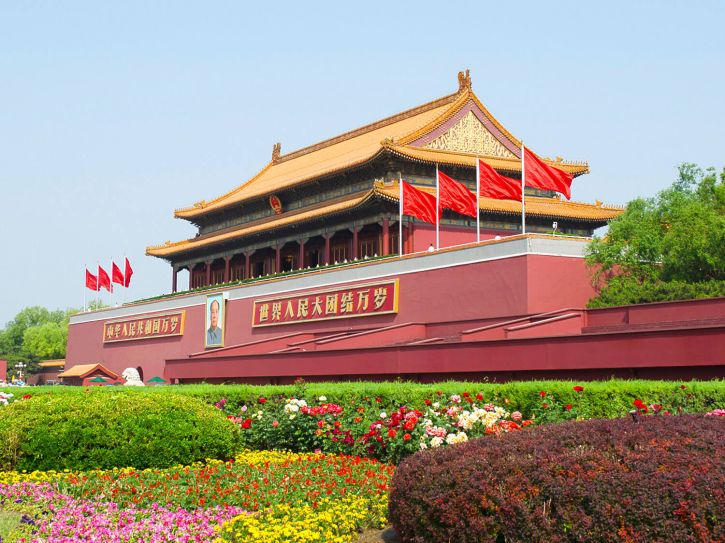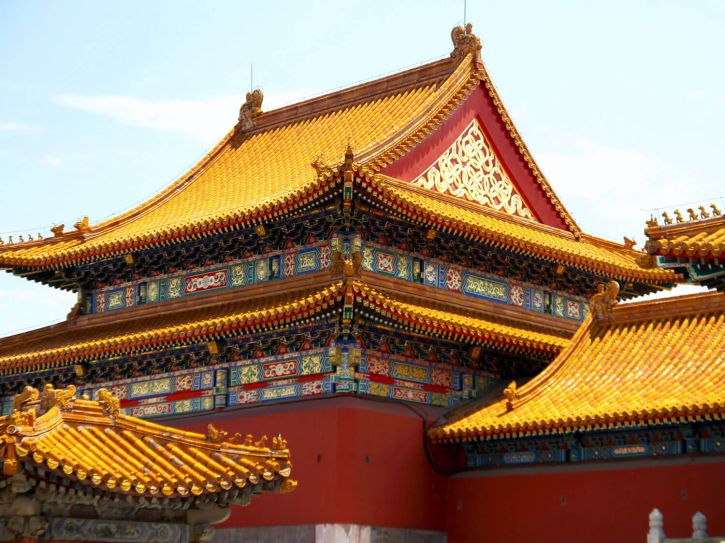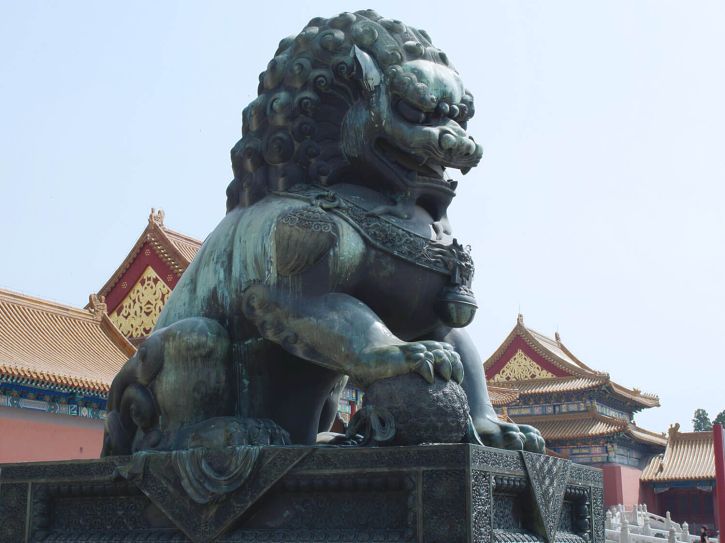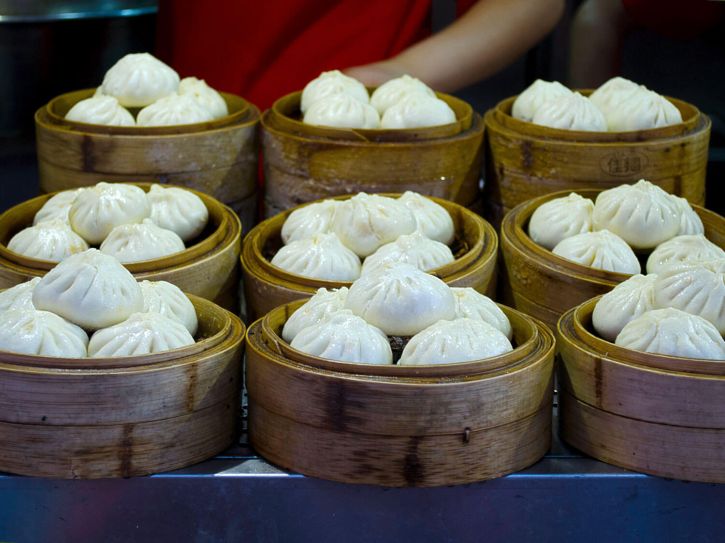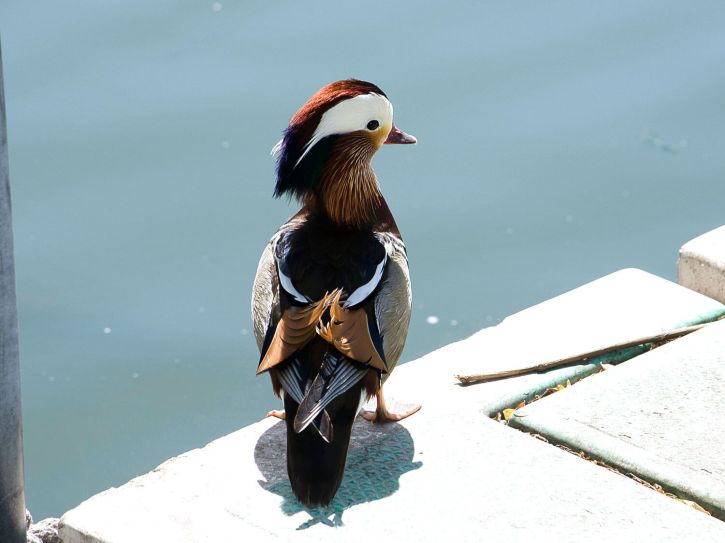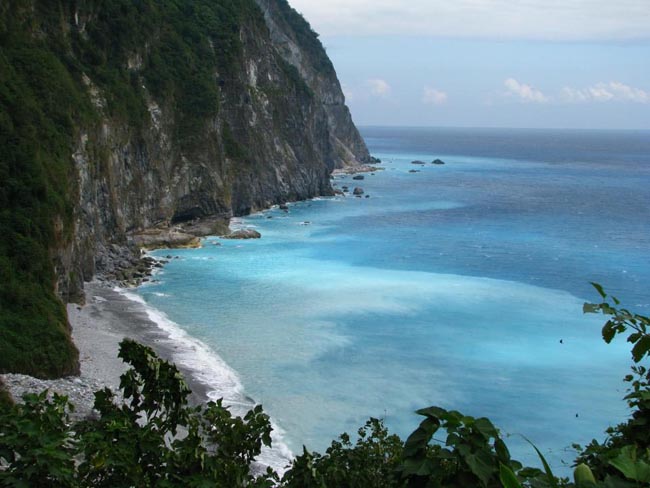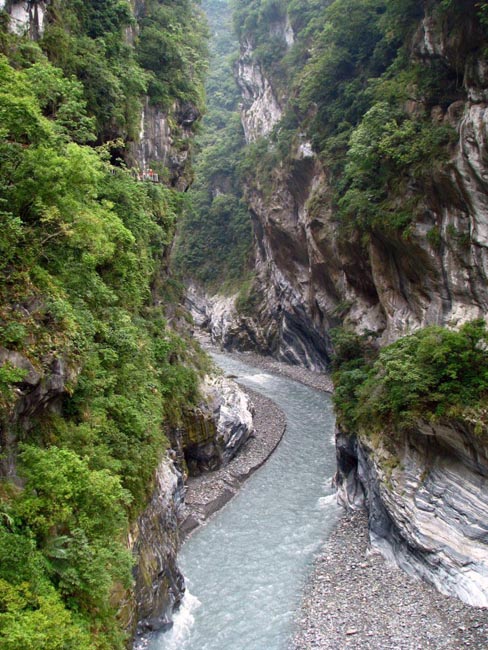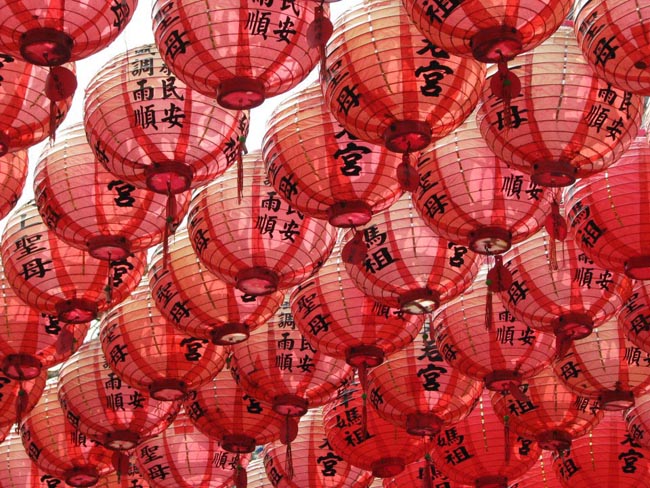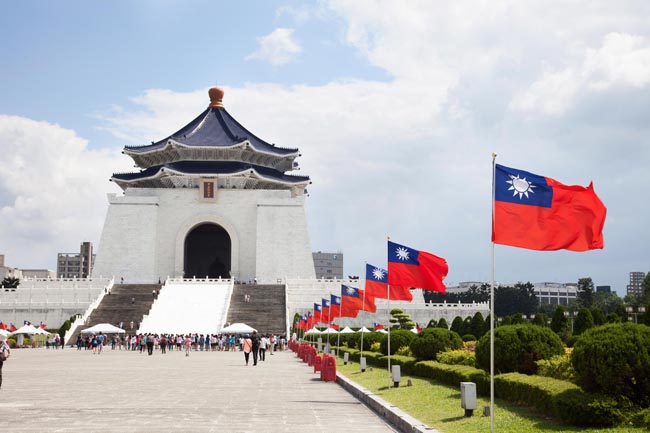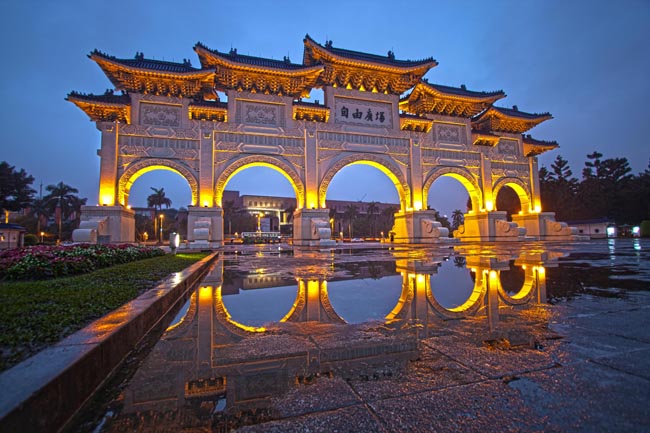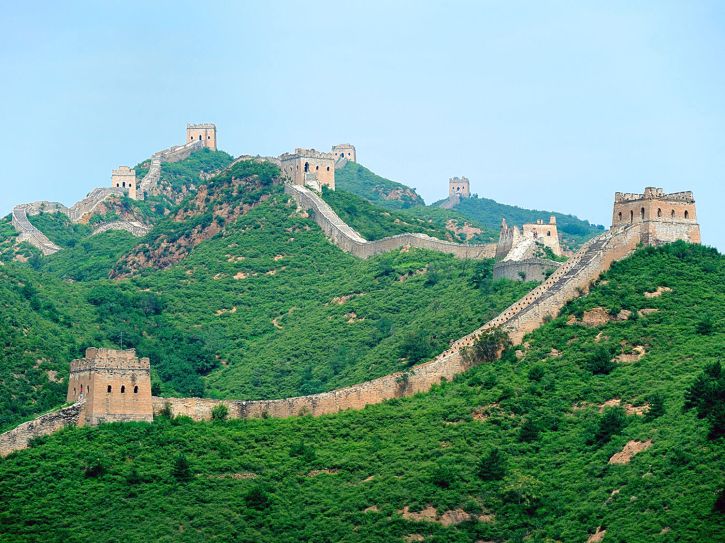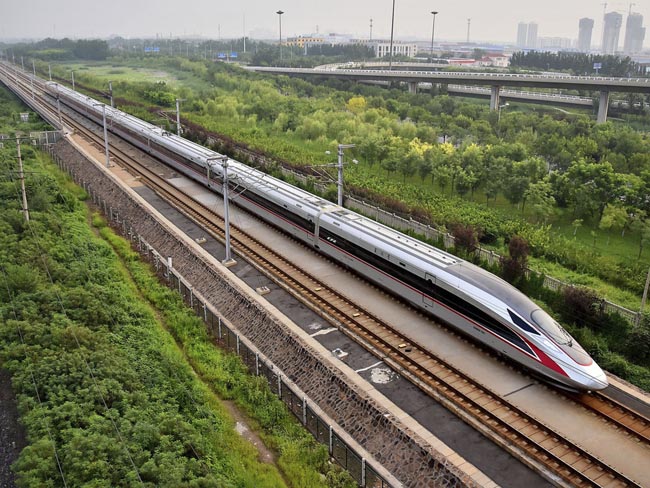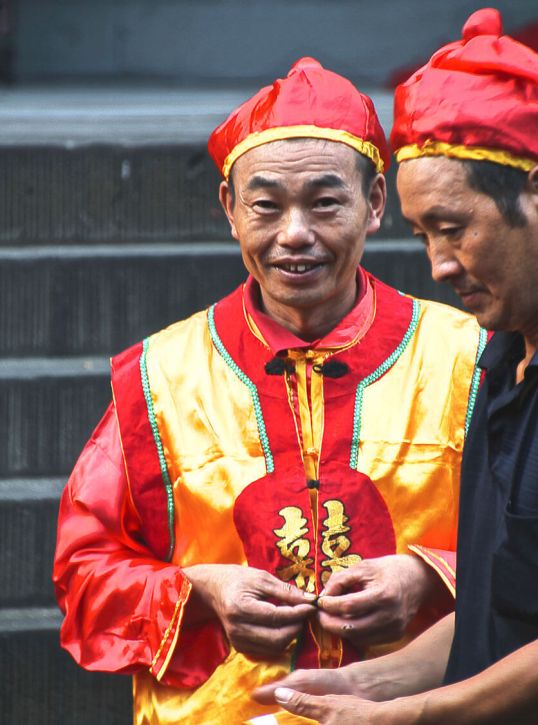*** PLEASE NOTE: North Korea's borders are currently closed due to the "Ebola threat." Once the ban is lifted, this tour itinerary, dates and prices for 2015/16 will be updated.
With the successful completion of our fall 2012 departure of this trip, we are set to return to explore this reclusive destination that has thus far been largely inaccessible to the Western world, and one that remains beyond the scope of most tour operators. For most travellers, this is a once-in-a-lifetime opportunity to visit one of the most secretive and intriguing countries in the world; far from a typical, run-of-the-mill tourist destination! Working closely with our partners in the DPRK, we have designed a comprehensive itinerary that showcases the many hidden wonders and that promises a cultural experience like no other. An organized tour is the only way to visit the DPRK - there is no alternative! Truly the last bastion of the Cold War, North Korea is not only untouched by mass tourism, but is also one of the last places on Earth that can claim to be wholly 'off the beaten track' for travellers. We hope you can join us on this extraordinary journey.
Download Itinerary
Day 1 Beijing Arrival
*** PLEASE NOTE: North Korea's borders are currently closed due to the "Ebola threat." Once the ban is lifted, this tour itinerary, dates and prices for 2015/16 will be updated.
Welcome to Beijing!
An overnight in Beijing is required at the start of this tour in order to ensure that all group members are assembled for tomorrow's flight to the Democratic People's Republic of Korea, or North Korea. (This itinerary does not include any Beijing sightseeing).
This unique adventure provides you with a rare chance to visit a fascinating and captivating country. For most travelers this is a once in a lifetime opportunity to visit one of the world's most extraordinary and intriguing destinations, and by no means an ordinary tourist destination. Working closely with our partners in Beijing and the DPRK we have put this itinerary together. An organized tour is the only possible way to visit the DPRK. There is no alternative. You will be one of the very few to travel through the worlds least visited country. Isolated and reclusive, the DPRK truly is the last bastion of the 'Cold War'. North Korea is not only totally untouched by mass tourism, but it truly is one of the last places on earth to really be 'off the beaten track'.
(Please note: The content and order of this itinerary may change before and/or during your visit to the DPRK).
Overnight in Beijing.
Included Meal(s): Dinner
Day 2 Beijing, China - Pyongyang, North Korea
Today we will fly from Beijing to Pyongyang, DPRK.
North Korea occupies the northern half of the Korean Peninsula, and today the Korean Demilitarized Zone serves as the buffer zone between North Korea and South Korea. The Amnok, or Yalu, and the Tumen rivers form the border between North Korea and China. A section of the Tumen River in the far northeast is the border with Russia, and the history of this region spans over 5,000 years. Due to its strategic geographical location (nearby to China, Japan and Russia), the peninsula has often been the field of battle of foreign powers and as now inextricably enmeshed in the global political climate.
Located on the Taedong River, Pyongyang is the capital of the Democratic People's Republic of Korea, commonly known as North Korea. Many consider this city to be a showcase city, as the political, cultural, and educational center of the country. This is a city built to show and impress the world with the success, progress and fortitude of the DPRK and its people.
The Taedong River flows southwestward through the city toward the Korea Bay, an arm of the Yellow Sea. One of Pyongyang's many historic names is Ryugyong, or "capital of willows", as willow trees have always been numerous throughout the city's history, and many poems have been written about these willows.
Upon arrival in Pyongyang we will be met by our North Korean guides, complete the entry formalities, and commence with a brief sightseeing program for the remainder of the afternoon, (depending on the flight arrival time).
This afternoon we will visit the unmistakable Arch of Triumph. This monument was built in 1982 in order to commemorate the Korean resistance to Japan from 1925 to 1945. Erected to honor and glorify President Kim Il-sung's role in the military resistance against Japanese rule, the arch was inaugurated on the occasion of his 70th birthday. Each of its 25,500 blocks of finely dressed white granite represents a day of his life up to that point. Modelled after the Arc de Triomphe in Paris, this is the world's tallest triumphal arch, standing 60m (197 ft) high and 50 m (164 ft) wide. Inscribed in the arch is the "Song of General Kim Il-sung", a revolutionary hymn from the year 1925, when North Korean history states that Kim set out on the journey for national liberation.
Before continuing on to the hotel we will also make a stop at the central Fountain Park, a popular local wedding photo venue.
Overnight in Pyongyang. Yanggakdo Hotel.
Included Meal(s): Breakfast and Dinner
Day 3 Pyongyang Sightseeing & Nampo: Mausoleum of Kim Il Sung / Martyrs' Cemetery / West Sea Barrage
Pyongyang lies on a flat plain about 50 km (30 miles) east of the Korea Bay. The capital has been completely redesigned since the Korean War (1950–1953), with wide avenues, imposing monuments, and monolithic buildings.
Today our sightseeing will take us to the Kumsusan Memorial Palace (Mausoleum of Kim Il Sung) in the northeast corner of the city. Also known as the Kumsusan Palace of the Sun, this palatial building serves as the mausoleum for Kim Il-sung, the founder and president of North Korea, and for his son Kim Jong-il who succeeded him as the country's ruler. The palace was built in 1976 as the Kumsusan Assembly Hall, and served as Kim Il-sung's official residence. Following the elder Kim's death in 1994, Kim Jong-il had the building renovated and transformed into his father's mausoleum. Inside the palace, Kim Il-sung's embalmed body lies inside a clear glass sarcophagus. Plans are underway for Kim Jong-il, who died in 2011, to be displayed next to his father. Kumsusan is the largest mausoleum dedicated to a Communist leader. Foreign visitors can only access the palace on certain days of the week, and they must be on an official government tour. (Photography, videotaping, and talking are not permitted anywhere inside the palace). The tone is unbearably somber, and anyone invited should be dressed smartly.
The Revolutionary Martyrs' Cemetery was built in 1975 on Mount Taesong and enlarged in 1985. Via a monumental Korean-style gate a flight of stairs leads us to the sculpture groups and the memorial pillars. Heroes who died before this cemetery was built have been reburied here. On each grave there is a bronze bust of the deceased war hero. There is a large red granite flag at the end of the complex with a bust Kim Jong Suk the wife of Kim Il Sung. The cemetery houses the remains of young revolutionaries who fought for independence against the Japanese occupation of Korea.
On top of the hill lay those who were the closest to Kim Il Sung, family members, and in the middle his first wife, Kim Jong Suk. On the horizon are the May Day Stadium and the massive 105 story concrete pyramid of the 'under-construction' Ryugyang Hotel.
After lunch today we will drive to Nampo. Our route will follow the 'Youth Hero Motorway', so named for having been built by the young. Following alongside the northern bank of the Taedong River, this journey to the coast passes through one of the most industrialized areas of the DPRK before reaching Nampo city. Situated some 50 kilometers south west of Pyongyang, at the mouth of the Taedong River, Nampo was originally a small fishing village. The area opened as a port of foreign trade in 1897 and began to develop into a modern port after liberation in 1945. Some of the nearby industrial facilities include a Smelter complex, Glass Corporation, Shipbuilding Complex, and Fishery Complex. Today Nampo is a center for the DPRK shipbuilding industry, and north of the city are facilities for freight transportation, aquatic products, fisheries, and a sea salt factory. South of Nampo is the DPRK's main agricultural area, and the region is best noted in Korean lore for its apples.
The Nampo Dam (West Sea Dam), also known as the West Sea Barrage, is located 15 km west of the city. This massive feat of engineering, with its eight-kilometer-long system of dams, lock chambers, and sluices, allows the passage of ships up to 50,000 tons. The dam closes the Taedong River off from the Yellow Sea. Built from 1981 to 1986, the resources of the whole country were directed to this main construction project. The stated goal of the West Sea Dam was: The raising of the water level in the Taedong River and increased ship traffic; The prevention of seawater intrusion into the fresh water, thus solving the water supply problem; The irrigation of additional land, enlarging the arable territory of the region. Foreign critics claim raising the Taedong river level has led to the loss of valuable farmland, contributing to North Korean famine. Nampo Harbour has also been used as the primary port of call for the reception of foreign food aid assistance into North Korea.
Overnight at the Ryonggang Hot Spa Hotel. (There is a private bath in each room that can be filled with water from the hot springs that is said to have medicinal benefits).
Included Meal(s): Breakfast, Lunch and Dinner
Day 4 Nampo, Pyongyang City Sightseeing & Mount Myohyang
Sightseeing today will start with a visit to the House of Kim Ung So. Kim Ung So (1564-1624) was part of the traditional ruling class who distinguished himself in the Hideyoshi Invasions of 1592-98. He also led the Korean vanguard during the siege of Pyongyang in January 1593 when the Pyongyang fortress was recaptured by allied Chinese and Korean troops. He was later dispatched to Manchuria to help Ming to fight against the Manchu state but suffered defeat and died there. Until 2002, descendants of Kim Ung So still lived in this old house in Ryonghung Village. Only a few buildings and residences from this era still exist in modern North Korea. Over the centuries most of this residence was damaged or destroyed, and the complex was reconstructed after 2002 on instructions of Kim Jong Il.
Today we will also make a stop at the Kangso Mineral Water Factory before returning to Pyongyang. Typical scenes on our travels are field workers weeding and planting, and oxen pulling ploughs through the rice fields.
Upon our return to Pyongyang we will visit the brilliant Victorious Fatherland Liberation War Museum. This is a huge three-story building documenting the Korean War. Some of the amazing displays include the 'cyclorama' where visitors are rotated past the part-painting, part-life size model of the battle for Taejon. A large collection of captured American and Allied equipment, tanks, fighter planes and armored personnel carriers fill the basement (the building was constructed around them). We will also see some nearby War Victory Monuments.
The stunning architecture and extraordinarily deep stations of the Pyongyang Metro make it a destination unto itself. This underground railway has two lines running under the main streets on the west side of the river, and we will travel along 6 of the stations. Second only to the underground metro stations in Moscow, Pyongyang's Metro is equally elaborate.
Chandeliers light enormous mosaics depicting heroic citizens from all walks of life; which stretch the length of the platform on both sides. With it's marble clad tunnels and pillars, the subway doubles as an air-raid shelter for Pyongyang's citizens. Today trains are reported to run every few minutes at peak times, carrying over 300,000 commuters every day.
Later in the day we will drive to Mount Myohyang. Myohyang-san, or the "Mysterious Fragrant Mountain", is named after the mystic shapes and fragrances found in the area. This is a fabulous pocket of peaks and forested valleys in the center of the country with a number of walking and hiking routes through the nearby hills. In 2009 UNESCO designated Mount Myohyang a world biosphere reserve, citing its cultural significance as legendary home of King Tangun, forefather of the Korean people, and spectacular cliffs providing habitat for 30 endemic plant species, 16
plant species that are threatened globally and 12 endangered animal species.
Overnight at Mt. Myohyang. Hyangsan Hotel.
Included Meal(s): Breakfast, Lunch and Dinner
Day 5 Mount Myohyang - Pyongyang: The International Friendship Exhibition & The Mass Games
This morning we will visit the International Friendship Exhibition, which is dedicated to the world’s gifts for the Great Leaders. Often dubbed the world's biggest treasure house, the exhibition displays presents received by the North Korean leaders over the ages. One big building stores the presents given to late leader Kim Il-sung, and another smaller one stores the ones given to his son, the late leader Kim Jong-il.
Among the over 100,000 items gifted to the Kim's are: green railway cars from Mao and Stalin, a bronze tank from the USSR headquarters in East Germany, a gold cigarette case from Yugoslavia's Tito, a gem-encrusted silver sword and reproduction of a Muslim mosque from Palestinian leader Yassar Arafat, and an antique gramophone from China's first premier Zhou Enlai. Possibly the most popular theme for gifts given by one dictator to another is taxidermy. Fidel Castro gave a crocodile-skin briefcase, and Nicolae Ceausescu, the Romanian dictator, gave a bear head mounted on a red satin pillow. Lebanon gave water buffalo-horn handles and the president of Tanzania gave an ivory lion. The National Black United Front gave Kim a small butterfly collection, at some point Canada gave North Korea a polar bear skin, and someone gave a tiger claw positioned as to be tearing through an American map. While to an outsider the museum represents a bizarre collection, with a remarkable amount of kitsch, ashtrays, and uninteresting consumer goods, it is not outsiders that are the intended audience. North Koreans have almost no contact with the outside world, and this is one place in which they are allowed to see many of the goods from around the world. The aim is to convince them that their leaders are universally admired and lavished with gifts.
We will also visit the Pyohon Buddhist Temple. Founded in 1042, this temple was named after the saint that guards the morals of Buddha. Prior to the Korean War the temple housed 60 monks, a fifth of whom were students. The temple complex was almost completely destroyed by bombings during the Korean War, though several of the main structures have been rebuilt, including a new Archive Hall.
Today we will enjoy a picnic lunch (weather permitting) before returning to Pyongyang.
This afternoon in Pyongyang we will see the USS Pueblo, an American technical research ship (Naval intelligence) that was boarded and captured by North Korean forces on January 23, 1968 in what is known as the Pueblo incident. Also known as the Pueblo crisis or the Pueblo affair, this event was a major incident in the Cold War, and occurred less than a week after President Lyndon B Johnson's State of the Union Address and only weeks before the Tet Offensive. North Korea stated that it strayed into their territorial waters, but the United States maintains that the vessel was in international waters at the time of the incident. Still held by North Korea today, the Pueblo officially remains a commissioned vessel of the United States Navy, and is currently moored along the Taedong River in Pyongyang where it is used as a museum ship. It is the only ship of the U.S. Navy currently being held captive.
This evening we will attend the Mass Games.* What are the Mass Games? The Mass Games can basically be described as a synchronized socialist-realist spectacular, featuring over 100,000 participants in a 90-minute display of gymnastics, dance, acrobatics, and dramatic performance, accompanied by music and other effects, all wrapped in a highly politicized package. Literally no other place on Earth has anything comparable and it has to be seen with your own two eyes to truly appreciate the scale on display.
The incredible display features complex routines that include tens of thousands of gymnasts synchronizing movements in line with a background of card-turners who create an ever-changing backdrop. The rapid changes of image sees one card exchanged for another in a swift and synchronized movement that takes hours of rehearsals and detailed choreography. The displays are regularly performed in the nation to celebrate national holidays such as the birthdays of rulers Kim Il-sung and Kim Jong-il. In recent years they have been the main attraction of the Arirang Festival in Pyongyang. The Games take place at the 150,000 capacity May Day Stadium. (Please note that at this time the dates have not been confirmed, so we cannot guarantee that the Mass Games will take place. You will be updated closer to the departure).
* There are rumours that the Mass Games will be discontinued from 2015 onward. As soon as their occurance or cancellation is confirmed we will amend this itinerary.
Overnight in Pyongyang. Yanggakdo Hotel.
Included Meal(s): Breakfast, Lunch and Dinner
Day 6 Kaesong, Panmunjom & the De-militarized Zone (DMZ)
Early this morning we will travel to Kaesong and the De-militarized zone (DMZ). Along our journey south we will witness scenes or typical rural life in the DPRK, with oxcarts along the roadside, bicycles passing by, and small hamlets dotted amongst the patchwork of rice fields. The roads are noticeably quiet, and the landscape gets hillier as we travel further south.
The name Kaesong means 'castle gate opening' and the city had long been a significant fortress city before King Wang Kon made it the capital of Koryo in 932. For 400 years it grew and prospered not only as the kingdom’s political center but one of great commerce and learning. Until World War II, visitors noted a bustling business town, a great center of the grain trade, and roaring business in sesame oil, paper products, and imports from Britain and Japan. Today, the city's main commodity is ginseng, with good trade in rice, barley and wheat until recently. Overlooking Kaesong is the pine covered Mt. Songak.
Panmunjom (DMZ) is a village on the de facto border between North and South Korea, where the 1953 Korean Armistice Agreement that paused the Korean War was signed. The building where the armistice was signed still stands, though it is on the northern side of the Military Demarcation Line, which runs through the middle of the Demilitarized Zone. This is considered one of the last vestiges of the Cold War, and should not be confused with the Joint Security Area (JSA) nearby, where discussions between North and South still take place in blue buildings that straddle the Military Demarcation Line. The entire area of the DMZ extends for 1.5 miles/2 kms on each side of the MDL, and for the entire width of the Korean peninsula (150 mi/240 km). Interesting enough the area on each side of the DMZ is one of the most heavily fortified in the world.
This afternoon we will enjoy lunch at a restaurant at the foot of Mt. Janam.
After lunch we will head to the Koryo Museum (Confucian University). Located northeast of central Kaesong in the Songgyungwan complex of buildings, this was the central institute of education in the Koryo dynasty (918 AD-1392 AD.) First erected in 992 AD, Songgyungwan consisted of over 20 buildings within a walled compound. Today 12 main buildings and 6 auxiliary buildings show the typical features of a Confucian educational institution of that period. In addition to being the highest educational institution in Koryo, it also was the center of Confucian rites for noted Confucians. The museum exhibits relics from the Koryo period, and included in the exhibits are pieces of pottery, iron works and prints. There are exhibits showing the astronomical skills of the Koryo as well as their mastery of beautiful celadon pottery production.
At the end of our sightseeing we will return back to Pyongyang. This evening you may have a second chance to see the Mass Games, and your local guides and tour leader will provide information regarding this visit.
Overnight in Pyongyang. Yanggakdo Hotel.
Included Meal(s): Breakfast, Lunch and Dinner
Day 7 Pyongyang City Sightseeing: Juche Tower / Kim Il Sung Square
Today's full day of sightseeing in the capital city will include a visit to the Juche Tower, which dominates the eastern riverbank, and is one of the tallest monumental columns in the world. This 170 meter (560 feet) stone-clad tower is named after the principle of Juche, developed by Kim Il Sung as a blend of autarky, self-reliance, nationalism, isolationism, Korean traditionalism, and Marxism-Leninism. Completed in 1982, it is sited on the eastern bank of the River Taedong, directly opposite Kim Il Sung Square, which is situated on the other side of the river. Constructed to commemorate Kim Il Sung's 70th birthday, the tower is capped with an illuminated metal torch. It is possible to ascend the tower via a lift providing us with wide views over Pyongyang from the viewing platform just below the torch. Associated with the tower is the Monument to the Party Foundation, a statue consisting of three figures -- one with a hammer, one with a sickle and one with a writing brush (an idealized worker, a peasant and a "working intellectual"). The three tools form to create the Worker’s Party of Korea insignia.
A visit to the Foreign Language Book Store provides us with the opportunity to obtain Korean books in English. As with everything else in North Korea, it's only possible to visit with a Korean tour guide, so in-between our stops in Pyongyang, we will be allowed some time to visit the bookshop. From the outside you wouldn't know it's a bookshop, as there are no signs or names on the building. As well as books about Kim Il Sung and Kim Jong Il (mostly written by the 2 leaders), there are also books about the war in Korea, local travel guides and history books. One can also find souvenirs such as pins, stamps, posters, flags, cd’s, DVD’s and other items.
Today we will also have the opportunity to walk along the street to Kim Il Sung Square. Here we arrive at a huge open plaza in the centre of Pyongyang. Named after the founding leader of the DPRK, Kim Il-sung, the square opened in August 1954. Located on the west bank of the Taedong River, the square is directly opposite the Juche Tower on the other side of the river. This is the place where the great military and torch parades pass. The square can accommodate more than 100,000 people, and has a great cultural significance, as it is a common gathering place for rallies and is often featured in media concerning North Korea. It is similar in form and design to the Tiananmen Square in Beijing and is used for the same purposes. With a dramatic riverside setting, surrounding the square are a number of government buildings, with the Great People's Study House sitting at the "head" of the square.
After lunch we will visit the Korean Central Art Gallery on Kim Il Sung Square. This is the main art museum of Pyongyang, and the expositions of the museum are mainly made up of Korean Socialist Realist art and Korean traditional art. We will also find time to stop at the Pyongyang stamp shop, with its large collection of North Korean stamps for sale.
Today we will also go to Moranbang Hill, a popular place for locals to enjoy their day-off. The Mansudae Grand Monument is the site of the imposing statue of Kim Il Sung, completed in 1982 on the former President's 70th birthday. Since his death in July 1994, it has become the focus for mourning. Local people come to the statue at all times of the day and night to lay flowers and observe a moment's silence. It is customary for a delegate from a foreign group to offer flowers.
Overnight in Pyongyang. Yanggakdo Hotel.
Included Meal(s): Breakfast, Lunch and Dinner
Day 8 Drive to Wonsan & the East Coast
This morning we will enjoy a very scenic drive to Wonsan, a port city, naval base and center of a well-populated strip of the coast. The journey takes us through a lush green landscape of forested hills and rice fields before descending towards the Sea of Japan. Located in the southeast of the country, this city was heavily bombed by the United Nations during the Korean War: Blockage of Wonsan. In fact, according to the official US Navy history, Wonsan was under continuous siege and bombardment by the American navy from March 1951 until July 27, 1953, making it the longest siege in modern American naval history. By war's end the city was a vast shell.
Situated on the coast of the Sea of Japan (East Sea), the city is protected by two promontories and 20 islands in the Yonghung Bay. Here one finds the best natural harbour along the east coast of Korea, with a spectacular setting!
The original name of this town was Wonsanjin, but it was also known by the Russian name of Port Lazarev (Lazaref). Under Japanese rule (1910-45) it was called Gensan. The area opened as a trade port in 1880, and in 1914 the Pyongwon Line and Gyeongwon Line railways were opened. These rail lines connected the city to Pyongyang and Seoul. Thus, the city gradually developed into the eastern product distribution center. Under the Japanese occupation, the city was heavily industrialized and served as an import point in the distribution of trade between Korea and mainland Japan.
After independence in 1945 the city's major economy shifted from trade to fishing and marine products. Its petroleum refineries and other facilities, damaged by bombing during the Korean War, have been rebuilt. Today Wonsan has become a cultural, educational, and medical center. The nearby beaches of Songdowon, Myongsan, and Simp'o-ri, on the eastern coast of the city, are known for bathing and recreation.
As well as viewing the Wonsan Docks and central square, we will also visit the Songdowon Schoolchildren’s Camp. Also known as the Songdowon International Children's Union Camp, the center was built to receive teenagers and youth for cultural exchange between North Korea and various foreign countries. We will also have the chance to walk on the beach. As with most of North Korea, much of Wonsan is not accessible to foreign tourists. However, nearby Songdowon is a famous bathing destination for North Koreans, as the water there is exceptionally clear.
Overnight in Wonsan. Tongmyong Hotel (a basic property with clean facilities).
Included Meal(s): Breakfast, Lunch and Dinner
Day 9 Wonsan - Hamhung
Today we travel north from Wonsan to Hamhung, the DPRK's second largest city. Hamhung is a major industrial city on the DPRK's east coast, and was closed to tourists for 65 years from 1945 until 2010! The journey here is not about seeing any particular sight, museum or attraction. Travelling to Hamhumg is all about the journey… and simply 'being there'. This venture north gives us the chance to visit a part of the DPRK that so few foreign eyes have ever seen. Roadside scenes will capture the honesty of daily life. In a country where there is next to no public transportation, and cars are few and far between, the cyclists tear along the pavement as pedestrians stroll past.
The Hamhung area was the site of a major battle during the Korean War, and twice in 1950 the city was evacuated. Today much of the architecture is post-war. The city was heavily destroyed (80–90%) during the Korean War. From 1955–1962, Hamhung was the object of a large-scale program of reconstruction and development by East Germany including the build-up of various construction-related industries and intense training measures for Korean construction workers, engineers, city planners and architects.
During our afternoon here we will visit the Hamhung History Museum, which focuses mainly on dynastic Korea and the struggles with foreign aggression. We will also see the former home of Ri Song Gye, one of the rulers of ancient Korea. King Ri Song Gye is known locally for managing to lose most of the territory of the country before being overthrown.
Overnight in Hamhung. Majon Hotel.
Included Meal(s): Breakfast, Lunch and Dinner
Day 10 Hamhung - Pyongyang
Today we travel back to Pyongyang via Wonsan. As we travel back through Wonsan we will stop to visit the Wonsan Agricultural University. Housed in beautiful surroundings, we will tour the lecture rooms of this important educational institution.
After a break for lunch in Wonsan we continue back to Pyongyang. Upon our arrival back in the capital, an interesting visit for many will be our stop at the Paradise Department Store. This department store is in no way representative of stores throughout North Korea, as the shelves are stocked full of foreign goods that are rarely found outside Pyongyang. It's a hard currency store, so the customers tend to be foreign diplomats, aid-workers, and tourists. You are not likely to encounter a typical North Korean citizen here.
Overnight in Pyongyang. Yanggakdo Hotel.
Included Meal(s): Breakfast, Lunch and Dinner
Day 11 Pyongyang Sightseeing / Return to Beijing
We start our day with a visit to the Grand People's Study House. Standing in the heart of Pyongyang, the Study House was constructed in 1982 in a traditional Korean style to celebrate leader Kim Il-sung's 70th birthday. The library was opened as the "centre for the project of intellectualizing the whole of society and a sanctuary of learning for the entire people." Lectures on a variety of subjects take place here. This building stands opposite the Tower of the Juche Idea across the Taedong River and is adjacent to Kim Il-sung square. The interior is divided into over 600 rooms for reading, lectures, recording, information, and consulting.
We will also visit the Mansudae Art Studio. With a labor force of approximately 4000 people, 1000 of which are artists, and an area of over 120,000 square meters, the Mansudae Art Studio just may be one of the largest art production centers in the world and by far the largest and most important of the country. The artistic works realized here include Korean Paintings (ink on paper), ceramics, oil paintings, bronze sculptures, woodcuts, embroideries, jewel paintings (made with precious and semiprecious stones reduced to powder) and charcoal drawings. The vast majority of the major art works of the country have been realized by Mansudae Art Studio artists.
Today we will also drive to the outskirts of the city to visit the Mangyongdae Native House where Kim Il-Sung was supposedly born and raised. The North Koreans who flock here consider it a holy site. It is, after all, the cradle of the revolution. The native house exhibits old farm equipment and household wares of Kim Il Sung's childhood.
After lunch we will head to the eastern side of the city. This part of Pyongyang is quieter, and home to the city's diplomatic quarter, many universities and a few hospitals. One of these is the 1500-bed Pyongyang Maternity Hospital, which we will visit. Birthplace of over 750,000 children since its foundation in 1980, the women in the DPRK call the hospital the benevolent baby's palace. We then finish up our sightseeing in Pyongyang with a visit to a Secondary School as well as a souvenir shop near Arch of Triumph. Late this afternoon we will transfer to the Pyongyang Airport for our flight back to Beijing.
Overnight in Beijing.
Included Meal(s): Breakfast, Lunch and Dinner
Day 12 Beijing, China - Taipei, Taiwan
This morning we will fly from Beijing to Taipei, Taiwan. On arrival you will meet your Tour Leader for this section of the tour.
Lying off the south-eastern coast of mainland Asia, and across the Taiwan Strait from China, Taiwan is an island truly on the edge of the Pacific. One of the most densely populated places on earth, this is also a natural wonderland with steep mountains, magnificent forests and an array of scenic attractions. Being situated on the western edge of the Pacific "ring of fire", continuous tectonic movements have created majestic peaks, rolling hills and plains, spectacular coastlines, and other natural wonders. 8 national parks and 13 national scenic areas preserve Taiwan's best natural ecological environment and cultural sites.
Known by the Portuguese as Ihla Formosa, or beautiful island, Taiwan's natural beauty is well complemented by its temples, historically rich cities and cultural traditions.
Overnight in Taipei.
Included Meal(s): Breakfast and Dinner
Day 13 Taipei: City Tour
We will spend today exploring vibrant Taipei, modern and old, where Taoist temples sit alongside shopping malls. Many have rated Taipei as one of the region's most dynamic, comfortable and liveable cities. Situated at the northern tip of the island, the capital is located on the Tamsui River, about 25 km southwest of the Pacific Ocean. This is the political, economic, and cultural center of Taiwan. Originally founded in the early 18th century, Taiwan quickly became an important center for overseas trade in the 19th century. Today this truly is one of Asia's most dynamic and fascinating cities. Taipei is the thriving heart of Taiwan and the bustling centre of commerce, government and culture.
Our sightseeing will first take us to the world-famous National Palace Museum, the world's largest collection of Chinese artifacts. Here we will see porcelain, paintings, jade, bronze, tapestries and other art objects that once belonged to the emperors of China. This truly is a breathtaking selection of Chinese Imperial Art. In 1949, the collection was brought to Taiwan by Chiang Kai Shek's armies. Nearby is the wonderful Shung Ye Museum of Formosan Aborigines. This museum houses exhibits relating to the cultures and histories of the Taiwanese aborigines. These Austronesian peoples are related through blood or linguistic ties to people across precolonial Oceania, as far away as Madagascar. The tribes developed pottery, basketry, woodcarvings, musical instruments and colourful costumes. We will view some fine examples of Taiwanese aboriginal handicrafts and learn about the history of these people.
After a break for lunch we will continue with our tour of the city. A must is a visit to the National Chiang Kai-shek Memorial Hall, located in the heart of the city. This Memorial Hall (C.K.S. Memorial Hall) was constructed in memory of the former president of R.O.C. During our touring of the city we will pass by the Presidential Buildings Presidential Square. Originally built by the Japanese, it originally served as the governor's mansion.
A must during the tour will of course be a visit to Taipei 101, with its outstanding views over the city. Taipei 101 is a 101-floor landmark skyscraper that claimed the title of world's tallest building when it opened in 2004.
Overnight in Taipei.
Included Meal(s): Breakfast and Dinner
Day 14 Taipei - Taroko Gorge
This morning we will depart Taipei and travel to the famous Taroko Gorge. Our route will take us to the hilly suburbs of Taipei, and through the Hsuehshan Tunnel ("Snow Mountain" tunnel), the longest tunnel in Taiwan. From the coastal city of Yilan we will continue along the coast via the Suao Highway.
The eastern coast of Taiwan is the least populated region and yet covers more than a fifth of the landscape. In every sense, nature is less tamed on this side of the island. Our drive will take us past the Qingshui Cliffs, located on a section of the highway that provides some of the most spectacular sights on Taiwan's Pacific coast. The cliffs here are more than 1000 meters high and they drop almost vertically into the sea. The highway snakes along its curving face, with the sheer cliffs rising on one side and a sheer drop to the ocean on the other.
The Taroko Gorge is the undisputed scenic highlight of Taiwan, the jewel of the beautiful national park of the same name. The gorge itself is a marble canyon featuring a rushing white water river, towering cliffs, hiking trails and even the odd hot spring. The most phenomenal aspect of the park is the amazing relief and change in terrain. In a single afternoon we will travel from the rugged coastal cliffs through a maze of subtropical forest. The road is carved into the sheer walls of rock, winding its way past forested peaks and cliffs towering thousands of feet above it, while hundreds of feet below a river roars past gigantic marble boulders.
Many consider this area to be the most attractive region of Taiwan. This steep ravine, with its high marble cliffs, is permeated with a network of tunnels. Shrines, waterfalls and grottoes are found throughout the area. We will spend the afternoon touring the gorge, with plenty of scenic viewpoints and trails to explore.
Overnight at Taroko Gorge.
Included Meal(s): Breakfast and Dinner
Day 15 Taroko Gorge - Sun Moon Lake
This morning we will drive out of the Taroko Gorge region and travel southwest to Sun Moon Lake, one of Taiwan's most famous and most beautiful vacation spots, situated in the foothills of the Central Mountain Range. Our route will take us from the gorge through a high elevation sub alpine coniferous forest. We travel via Puli, a town in the heart of Taiwan and surrounded by mountains.
We will have a guided tour of the spectacular Chung Tai Chan Monastery located on the outskirts of Puli. This massive temple is more than just another modern temple - it is an international centre of Buddhist academic research, culture and the arts.
This afternoon we continue with our journey to Sun Moon Lake. The surrounding region is dotted with temples and pagodas, and on arrival we will have the opportunity to visit Wenwu Temple. This region has also been a center of aboriginal life for thousands of years, with aboriginal people involved in its tourist industry since the 1930s.
Overnight at Sun Moon Lake.
Included Meal(s): Breakfast and Dinner
Day 16 Sun Moon Lake - Tainan
After breakfast we will continue exploring the Sun Moon Lake area. In this idyllic environment we will see the deep blue waters of the lake and the mountainous surroundings from different perspectives. We will begin by enjoying a cruise across the lake, where we will benefit from fantastic views of the neighbouring mountains. Then, we will take in the lake from above as we experience the Sun Moon Lake Ropeway.
This afternoon we continue our journey south to Tainan.
Tainan is the oldest city in Taiwan, and was its capital for over 200 years. This city has managed to maintain much of its historical character, and its many historical sites make for some great exploration. Most of the Han migrants who sailed for Taiwan in the 17th and early 18th centuries landed on the islands southwest coastline, an area of flat land suitable for rice cultivation. Often compared to Kyoto, Tainan is an essential destination for those interested in history, religion and traditional ways of life. Upon arrival in the city we may enjoy some sightseeing this afternoon.
Overnight in Tainan.
Included Meal(s): Breakfast and Dinner
Day 17 Tainan Sightseeing
Today we will enjoy a full day of sightseeing in Tainan. This is an enticing city and a true highlight on the west coast of Taiwan. Tainan retains a stronghold of traditional Taiwanese culture, with frequent Buddhist parades and ceremonies. Our exploration will take us to several of Tainan’s historic sites and temples, as well as the Dutch fort of Anping on the coast. We will explore both the Chihkan Cultural Zone and the Confucius Temple Cultural Zone.
The Chihkan Cultural Zone covers the northern part of the old city, and highlights here include several temples and the Chihkan Tower. This was the site of Fort Provintia, built by the Dutch in the 1650’s. Meaning ‘eternity’ in Dutch, the Chihkan Tower has been a significant administration centre of Tainan ever since the Dutch invaded the country. The tower has been through various periods of Chinese rule, such as the Ching and Ming Dynasties, as well as a period of Japanese Colonization. Many of its original architectural features can still be seen today.
Anping is considered to be the cradle of Han Chinese civilization in Taiwan, and the first European base on the island. It took the Dutch nearly 10 years of hard work to construct the impressive Fort Zeelandia (Anping Old Fort) in the town of Anping. This noteworthy fortress is a clear reminder of colonial rule in the country. When constructing the fortress the Dutch selected a sandy peninsula in Tainan, and the strategic location was aimed at providing direct access for various supplies and support from Batavia (now known as Jakarta, Indonesia). Yanping Street is one of the oldest streets in Tainan. Also known as Anping Old Street or Taiwan’s 1st Street, it was the first established merchant street in the area. We will walk along the narrow and winding streets with their little shops and food stalls that cover a full range of souvenirs and handmade products.
As well as these sites we will also explore the southern half of the old city of Tainan where we see the well-preserved Great South Gate and the Confucius Temple. Built in 1665, the Confucius Temple is believed to be the oldest Confucius temple in Taiwan.
Overnight in Tainan.
Included Meal(s): Breakfast and Dinner
Day 18 Tainan - High-speed train to Taipei - Taipei Sightseeing
Today we will leave Tainan and travel back to Taipei by high-speed train. This high-speed line opened for service in 2007, using trains with a top speed of 300 km/h (186 mph). The journey time from Tainan to Taipei will take just over 90 minutes!
This afternoon we will complete our sightseeing of Taipei. A visit to the Taoist Lungshan Temple provides some insight into the local culture. Dedicated to Kuanyin, the Goddess of Mercy, this is one of the city’s most popular and busiest temples. Like most temples in Taiwan, the Temple worships a mixture of Buddhist, Taoist, and folk deities such as Matsu.
We will walk through the Dihua Street Area, where one can get a true feel for the city’s past. The old-town market has dozens of shops selling a variety of traditional goods such as Chinese medicines and herbs, temple icons and incense, spices and dried food, colourful bolts of cloth, and bamboo and wooden crafts. This is a fascinating patch of the past.
Built on a green hillside in 1969, the impressive Taipei Martyrs Shrine was architecturally inspired by the Hall of Supreme Harmony in Beijing's Forbidden City. The shrine is dedicated to the 390,000 soldiers killed in the service of their country during the War of Resistance against Japan and the civil war between the Chinese Republican and communist forces.
Overnight in Taipei.
Included Meal(s): Breakfast and Dinner
Day 19 Departure
Today we say our goodbyes and depart from Taipei.
BON VOYAGE!
Included Meal(s): Breakfast
Inclusions
Breakfast and dinner (mostly at local restaurants). All meals in the DPRK are provided and inclusive on the tour and are fair but not cordon bleu. Most of the meals will feature traditional Korean food, inc: 'Naengmyon' (cold noodles); 'Bulgogi' (barbecued meat which you cook yourself); 'Kimchi' (pickled cabbage). Local beer and, on occasion, Ginseng wine are available at meal times.
Vegetarians can be catered for although it cannot be guaranteed that utensils used to touch food will not have touched meat, or that cooking oil does not contain animal fats.
All transport, accommodation, sightseeing and entrance fees for sites noted as 'visited' in the detailed itinerary. One Mass Games ticket.* Gratuities for restaurant staff, porters, local guides. Airport transfers for land & air customers and for early arriving / late departing land & air customers who book their extra hotel nights through us.
* There are rumours that the Mass Games will be discontinued from 2015 onward. As soon as their occurance or cancellation is confirmed we will amend our itinerary.
Exclusions
International airfare to/from the tour. Tour Leader gratuities, personal items (phone, laundry, etc), international air taxes (if applicable), and any excursions referenced as 'optional' (ie second Mass Games ticket). Airport transfers for Land Only customers. Optional trip cancellation insurance. Our post-reservation trip notes offer further guidance on shopping, not included meals, visas.
Approximately $70 North Korean visa fee will be added to your invoice (we process this visa for you - no need to send away your passport). You will need to acquire a double entry visa for China on your own.
Seasonality and Weather
Autumn tours can expect moderate humidity and warm temperatures ranging from 12-25 C (53-78 F). Rain showers can occur at any time.
Transport and Travel Conditions
Transport throughout the DPRK will be by private air-conditioned bus. We have numerous walking tours and visit several sites that are large with steps and uneven surfaces. Travel to DPRK requires a certain conduct of behaviour that places restrictions on photography, communication with locals, and independent movement. You must be prepared to follow these rules and to be monitored for your compliance.
Am I suitable for this tour? Please refer to our self-assessment form.
Accommodation
The hotel we use in Pyongyang is the deluxe class Yanggakdo Hotel. It is western 3 star (Chinese 4 star) equivalent and equipped with bars, restaurants, shops, swimming pool, bowling, casino, and other entertainment facilities (including Karaoke of course). The hotel has reliable electricity, heating, air conditioning, hot water, and now have foreign TV channels including BBC World.
The hotels we use outside of Pyongyang are less well developed and have temperamental supplies of electricity and hot water, however there are some spectacular hotels in other places in DPRK such as the traditional Korean style Minsok (Folk) Hotel in Kaesong and the Pyramidal Hyangsan Hotel near Mount Myohyang.
Hotels in Taiwan are international style, 3-star properties.
Staff and Support
Tour Leader throughout, local guides at various locations. Official escort / guide throughout DPRK.
Group Size
10-18 plus Tour Leader
Regions visited: Far East and Central Asia
Countries visited: China; North Korea and Taiwan
*The red tour trail on the map does not represent the actual travel path.
The following is a list of sample hotels at some locations included on this tour. The hotels shown here are meant to provide a general sense of the standard of hotel we usually aim for; they are not necessarily confirmed for your chosen departure.
















